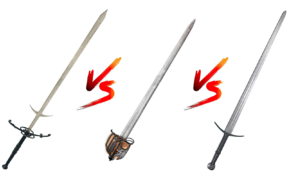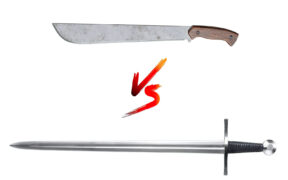Our content features commercial links to our products, committed to transparent, unbiased, and informed editorial recommendations. Learn More
Axe vs Sword: The Duel Between Brute Force and Versatility
NO AI USED This Article has been written and edited by our team with no help of the AI
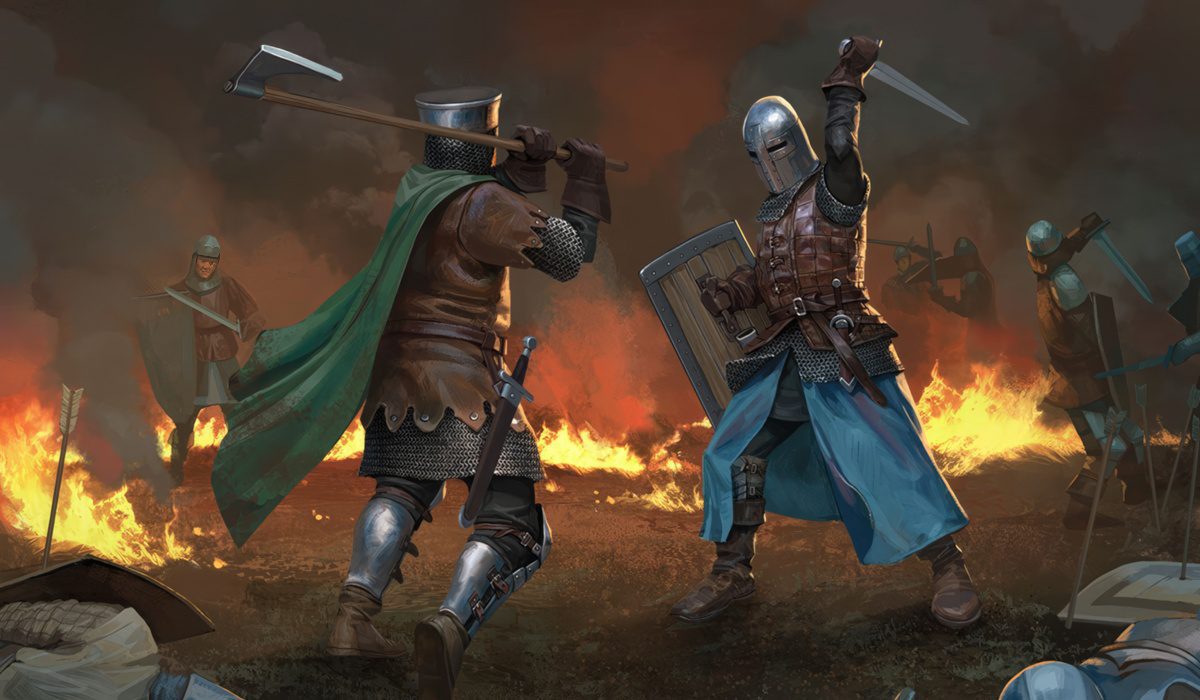
Weapons such as swords and axes have been crucial in the development of human society. These were tools of war, hunting implements, and environment-altering instruments that gave humans an advantage in their pursuits of survival throughout history.
The debate about whether an axe or a sword is better has been ongoing for years. In this article, we will give you our fair share of opinions and explain why both weapons are useful in their own way. We will also conclude with a decision and a victor regarding combat scenarios. We will present the pros and cons of each weapon’s value, characteristics, use and history.
Use
| SWORD Pros & Cons Value | AXE Pros & Cons Value | |
|---|---|---|
| Economy | No | Yes |
| Maintenance | No | Yes |
| Quality Need & Durability | No | Yes |
| Faster Training | No | Yes |
| Daily Tool Activities | No | Yes |
| Against Shield & Armor | No | Yes |
| Reach | Yes | Yes |
| Speed | Yes | Yes |
| Slashing | Yes | Yes |
| Thrusting | Yes | No |
| Precision | Yes | No |
| Defence | Yes | No |
| Movement & Range of Motion | Yes | No |
| Control | Yes | No |
| Versatility | Yes | No |
Swords and axes are very effective weapons of war that are used differently, as they both have advantages and disadvantages.
Swords
Short and long swords can be used one-handed or two-handed. They all have the making of a weapon that has evolved with time. Changes to their design allowed them to face different types of armor, infantry, or cavalry enemies. Some of these weapons, such as the Rapier, are now specifically made for dueling.
Slashing, thrusting, and pommel bashing are the three main offensive and defensive uses for swords in battle. Swords are built to be lightweight, quick, and agile. These versatile weapons can be used with a shield to offer precise strikes that can pierce gaps in the opponent’s armor. They are also powerful enough to smash enemy armor, or slice exposed skin with great momentum. Depending on the length, swords can be used like a close melee weapon or with a longer distance between the fighters.
Axes
Axes are tools or weapons designed to deliver powerful chopping or slashing attacks. There are smaller, lighter one-handed axes and larger, heavier two-handed weapons of destruction. Some poleaxes have spiked blades to give them attributes like the polearms or spears.
Axes are typically employed in chopping and hacking contexts. They’re built to be hefty and effective, with the potential to shatter shields and other forms of protection. As an alternative, though less common application, axes can be thrown. Due to its heft, an axe is extremely effective in close combat due to the force it generates when swung, which makes it much easier to use in a hit-and-run kind of tactic.




Characteristics
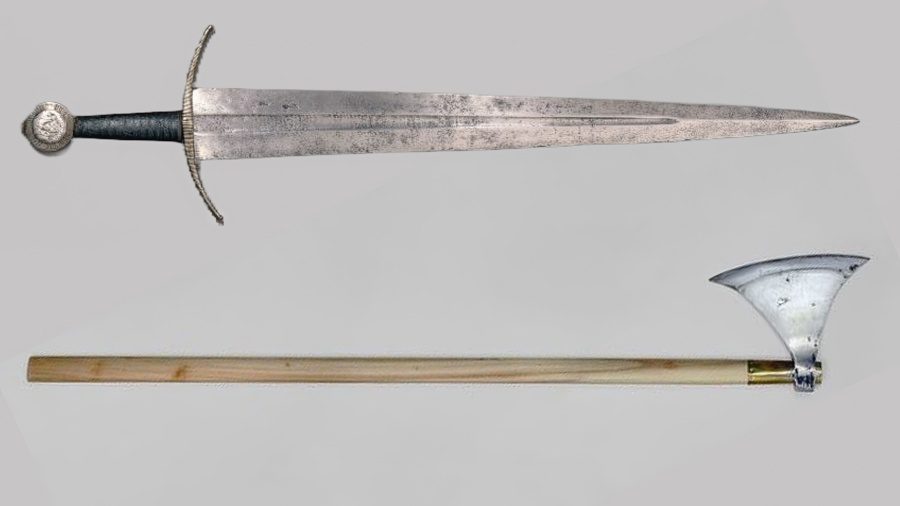
A sword is a single or double-edged bladed weapon made and used throughout history, mainly with combat in mind. An axe is a single-edged tool used for daily activities but is also used offensively and defensively in war.
Blade
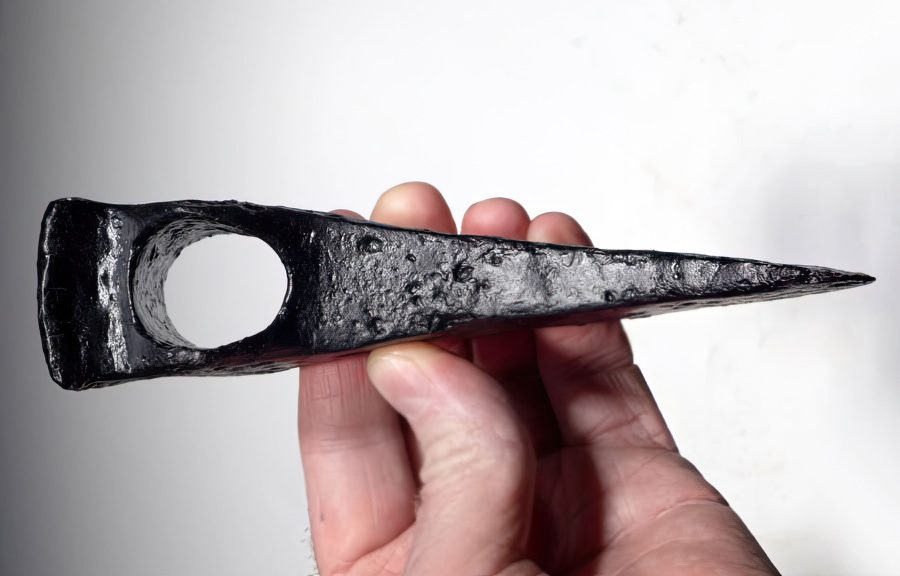
The blade is the most important characteristic that sets the sword and axe apart. The sword has a single or double-edged blade, meaning sharpened on one or both sides. The blade usually tapers toward a sharper tip making it a powerful tool for thrusting. Curved sword blades, like the Japanese Katana, will have a quicker attack speed when used in a slashing momentum.
On the other hand, axes usually have a shallow wedged angle blade that is smaller and lighter than the sword, usually around 0.8 lbs (400 grams). Although lighter, it is still capable of vigorous slashing attacks. The axe can also inflict deep wounds and massive blunt trauma through armor and completely sever body parts.
Guard
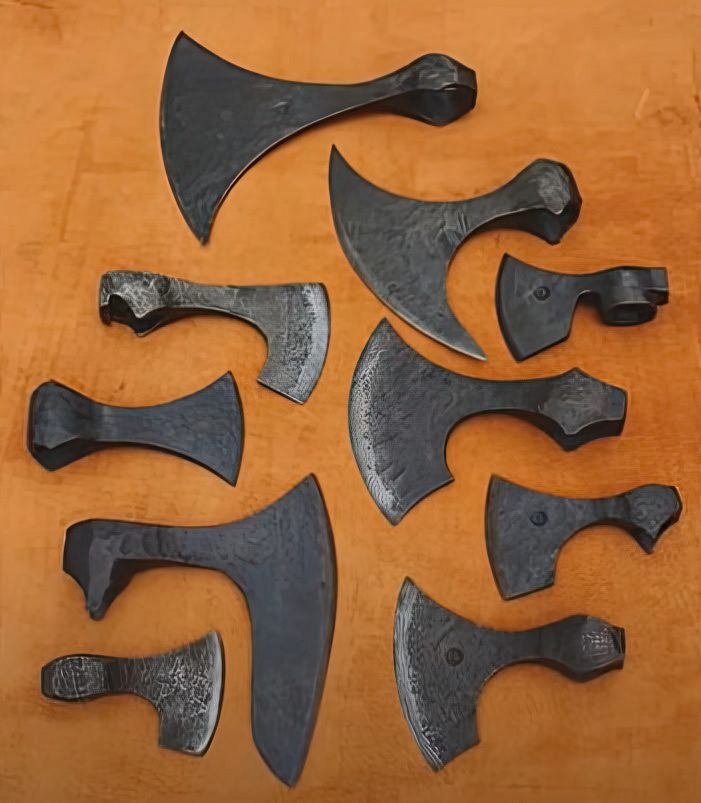
The guard is a type of metal, which can be straight, round, closed, opened, or basket and offers a great deal of protection to the user’s hand. It can be bigger or smaller depending on what type of handed sword it is. It is a feature that protects the swordsman and allows different ways of attacking or counter-attacking.
The axe, on the other hand, does not feature a guard. There are some cases where axes have had sword handles and guards. However, they did not play a big role since axes are mostly used in slashing strikes while holding their long handles.
Handle

The sword has a handle that can be smaller, allowing it to be used one-handed, or the handle can be larger so two hands can be placed on it. This handle is under the guard and offers a fairly good grip while also giving the wielder flexibility to move their hands around in various swinging or thrusting motions.
Instead of having a handle, an axe has a very big shaft that can be gripped with one or two hands anywhere along its length. This allows the attack to be varied and controlled in speed, power, or maneuverability. However, this does not offer any protection as the hands of the wielder are vulnerable to injury.
The sword has a pommel, and a metal cap on the end of the handle, which offers back support to the user’s hand. It also gives more options in defense or attack and can be used as a bashing tool if needed.
Length & Size
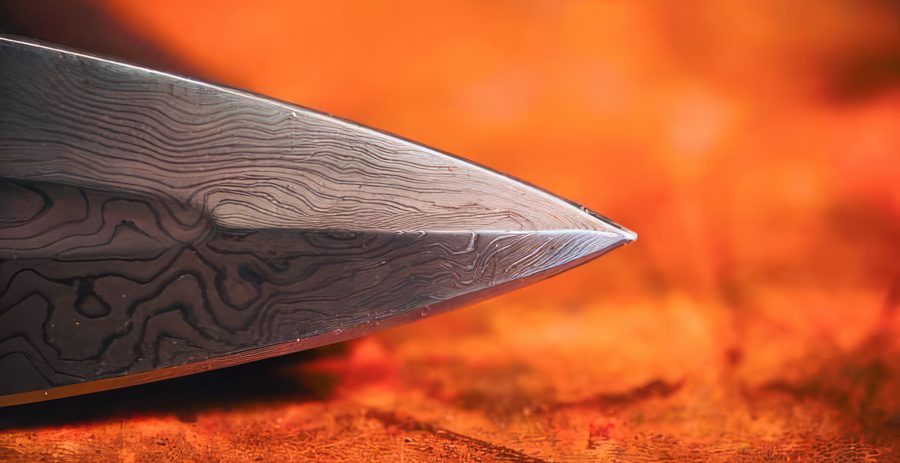
There are many different shapes and sizes for swords and axes. The largest sword, like the Zweihander, can reach 7 feet (220 cm) in length, whereas it is generally accepted that the length of a battle axe is 5 feet, and anything longer would be a halberd or polearm.
For swords, this is an extreme length used only in particular cases. The most common length for a sword in battle would be 3 to 5 feet (90 to 150 cm), but for axes, it could be as short as 24 inches (60 cm) or long as 5 feet (150 cm).
Weight
The weight of the axe and sword are roughly the same range, depending on the type of weapon. These weapons weigh roughly 1.7 to 6.6 lbs (0.8 to 3 kg). The difference is that the axe has balancing, and the center weight point at its blade, making it feel bulkier than the sword.
History

Dating back to roughly 3000 BC, swords have a long and illustrious history. The earliest examples were utilized in ceremonial contexts, represented a higher status, and included elaborate decorations. Once iron and steel were developed, they were increasingly employed as primary or secondary weapons by soldiers in battle.
Swords have long been associated with nobility, power and martial arts throughout various cultures. There are many legendary swords from myths and folklore surrounding almost every nation on the planet. What rose them to this status, however, is that they were terrifying and harder to obtain than axes.
For example, in excavations and findings throughout the world, there were many more axes than swords found. They were harder to master, and not everyone could afford them, especially the common folk or villagers.
For example, the Scandinavian Vikings are among the most popular associations with swords and axes. Vikings did use long and short swords in battle, but the majority had axes. Axes were common, easier to create and effective in defence when used with a shield.
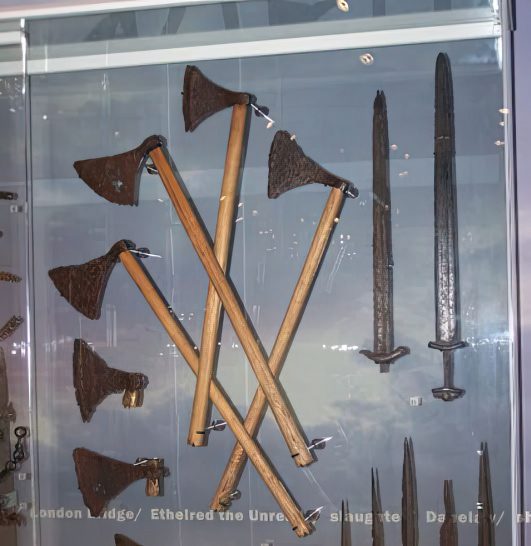
By contrast, axes have existed since well before the sword, dating back to the Stone Age. The common idea that mammoths and ancient beasts were hunted with stone axes is inaccurate. Instead, stone axes were occasionally used as weapons but also served more practical purposes, including chopping wood, building, and farming. The idea of the axe as a helpful daily tool also made its way into folklore and mythologies.
Eventually, axes became more common in warfare, quickly becoming the weapon of choice for many infantrymen. Compared to swords, iron axes were more straightforward in form and easier to use. They were also cheaper and could be crafted from materials like stone, bronze, or iron without extensive blacksmithing knowledge.
Sword vs Axe – Which is the Better Overall Weapon?
The weapon that could be used more effectively in battle and overcome the other is the sword by far. From what we have experienced and seen in HEMA battles, the sword almost always wins in 1v1 battles, whether with a shield or without one. It is a flexible weapon of war that offers powerful balance and handling control. In terms of combat, the sword is capable of everything an axe can do and more. A sword is a jack of all trades, which, when used by an experienced swordsman, is arguably the best weapon in melee combat.
A lot of people will say that the axe could hook shields. But this leaves its user wide open for any type of attack. The axe is better for penetrating armor and shields, and many people think swords are only meant for thrusting and causing less attack damage. Even a well-placed strike on a helmet with a sword could lead to a cracked skull without penetrating the metal itself.
If a shield, sword and axe battle were to occur, the sword would have a slight reach advantage over the one-handed axe or hatchet and almost certainly win the duel. If a powerful and long axe is coming toward a sword user, the approach would be to dodge and evade the attack rather than try to defend oneself directly.
The reason axes were so popular in the Viking Age is their utility. It was a “peoples” sort of weapon. It was cheaper to make and more durable, requiring less maintenance with an unsophisticated design. The weapon was also familiar to most folks as they were a part of daily living from childhood. It is an excellent tool and weapon that could effectively do its job.
But the sword is still the better weapon for combat. The sword has great versatility and reach, as well as the option of being used to attack or defend. The sword also has an easy redirection, balance and the ability to slash and thrust in both directions. While requiring much more training and discipline, it is undoubtedly the best choice.
